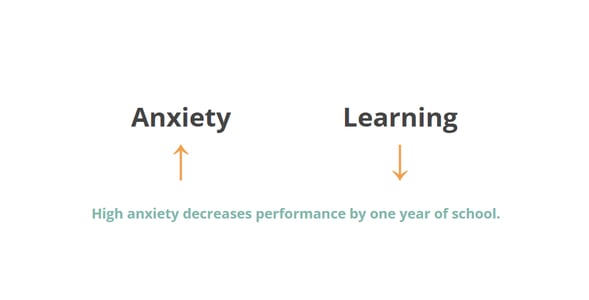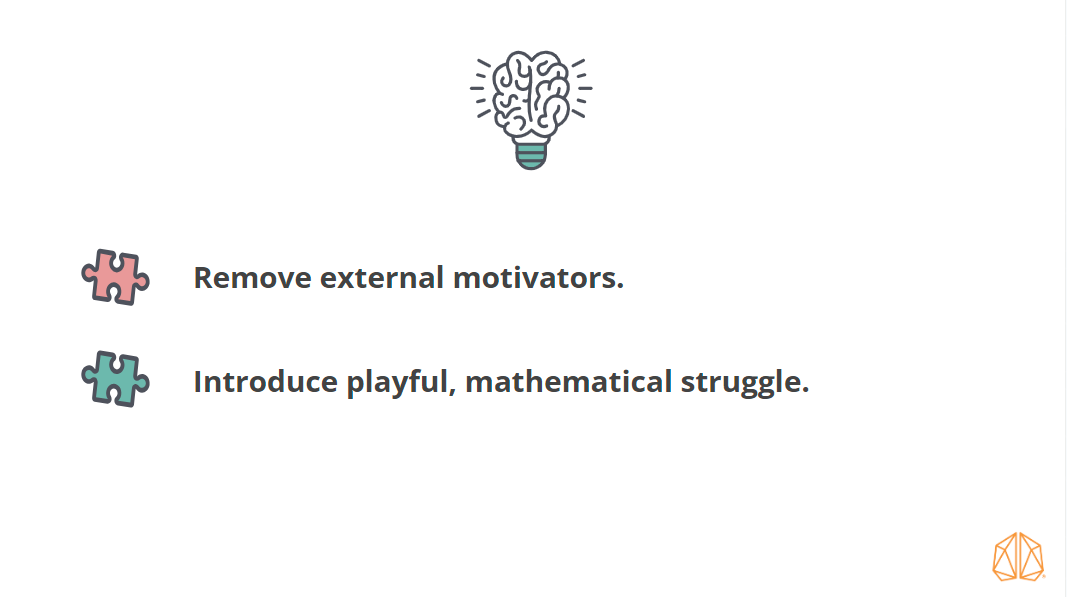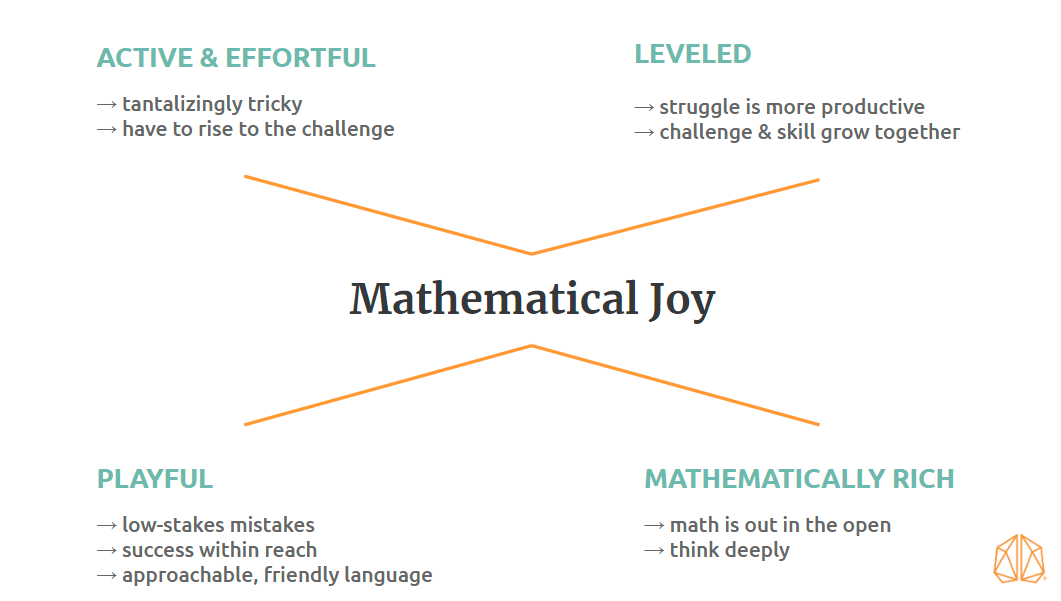
There’s exciting science around what we find enjoyable, and it’s not “fun” in the way that we think it is. Some questions worth asking are: What does enjoyment mean in the context of learning math? And why does it matter when teaching math in the classroom or any other setting?
In a recent edWebinar, Brandon Smith, Lead Mathematician and Product Director at MIND Education, explores and uncovers the key to true enjoyment, how it amplifies learning, and how to design math experiences to help students become more engaged with their math education. By discovering what students enjoy, we can harness this knowledge to create an engaging math experience that promotes deep conceptual learning.
Read further to see some of the highlights of Brandon’s presentation on how to uncover the joy of math.

We’ve seen many articles in the past few years highlighting the concerns of math anxiety and all of the detrimental effects that arise with it, but we don’t hear enough about how to address math anxiety in a truly tangible way. The prevalence of math anxiety among students has led to feelings of helplessness and apprehension when tackling complex math problems. And research shows that high levels of anxiety of any type lead to poor academic performance, primarily due to low self-esteem issues, which can hinder the development of problem-solving skills.

There’s nothing wrong with wanting to foster a positive state of mind, especially when it comes to tasks typically associated with hard work and struggle. But it’s essential to determine how we achieve positive emotions and the type of motivators underlying them.

When considering Extrinsic Motivators—the motivation to attain a goal from outside yourself or an external reward—its effect on performance can be detrimental, especially if the task requires creativity, conceptual understanding, or flexible thinking.
Intrinsic Motivators, on the other hand, is the drive to do something because it is interesting, challenging, and absorbing—essential for high levels of creativity. These are reserved for tasks that you do because it’s fun. You do it simply for the joy of figuring it out and accomplishing a goal. When attempting to solve a puzzle, like Sudoku, it’s not about the external reward; it’s about wanting to get to the bottom of something. There’s an inherent eagerness to figure out the solution.
Another way of looking at why external motivators can impinge and even stunt creativity is this idea behind merely adding something—such as colorful or impressive-looking graphics—to “enhance” the experience. Adding a sweetener to broccoli doesn’t enhance the flavor. When you add sugar for the medicine to go down more easily, you’re saying that the medicine isn’t fun; it doesn’t taste good, so let’s cover it up.
Now take math. When we apply this same principle of including an extrinsic motivator to “enhance” the math objective, we’re saying that math can’t be fun and needs to be “covered up.” Our goal here is to move away from external motivators that cover up what is actually an intrinsically rewarding activity.
Kids don’t dislike math because it’s hard; they dislike math because they’re bored.
- Nigel Nisbet, Vice President of Content Creation
When we talk about productive struggle, what are we really saying? The process of effortful learning helps us develop perseverance and encourages creative problem solving. Through productive struggle, we want students to be able to make connections to things they already know and seek different approaches toward the same solution. This can enable students to work through new, challenging problems they’ve never seen before.
The goal is also to show how the struggle is inherently fun. But for this conception of struggle to manifest in a student’s math learning, we need to unlock two major principles behind what it means to struggle:
Of course, we want to find a balance regarding the amount of struggle a student should experience. We don’t want the stakes to be too high for them; we want them to have an experience with the struggle that is light and open.
When talking about mathematical joy, there are four features to consider.

We want to ensure a mathematically joyful experience is:
Active and effortful means tantalizingly tricky. The challenge must have a clear goal; but, at the same time, involve an unclear path. It can be unnecessary to have instructions to get started, which allows students to rise to the occasion. Students are propelled into a situation where they’ll have to stretch their minds to the limit.
By leveled, we’re talking about the productive struggle. The challenge and skill will grow together. A math experience will be more fun and joyful if it goes in another direction that’s still related. When students stretch their minds to the limit, they’re able to overcome the challenge they’re facing.
By playful, we’re referring to low-stakes mistakes. A “playful risk” is one where the mistakes are not unsalvageable. At every level of the struggle, they should still feel that success is within reach.
It’s very difficult to experience true joy in math unless you stretch your mind to the extreme. We don’t want to hide the math, and we certainly don’t want colorful graphics or visual design elements to hide the math—or simplify it so much that it’s no longer a struggle. The math needs to be out in the open. To experience true joy, we want students to think more deeply in a mathematically rich environment than they’re typically used to.
Look at the example below for a better sense of what is meant by mathematical joy.

Take one of our MathMINDs games, Turtle Sums. Inspired by an ancient story from China, Turtle Sums features a magical turtle named Lo Shu with a peculiar pattern on her shell. Accompanied by one of our MathMINDs storybooks, the object of the game is to unlock the secret code on her shell to unlock the magic that will save a village from a flood.
The game and story illustrate how the magical turtle serves a purpose. Rather than simply dressing the game up with visual elements, there’s a goal involved. There’s also a cultural component that provides further context for the game.
In another iteration of the story and game, the magical turtle experiences an itch when the numbers are out of place. To make the turtle happy, we want to ensure the numbers add up correctly.
To check out other games and stories that can change the way students experience math and instill mathematical joy, visit the MathMINDs site.
To quickly recap what we mean when talking about mathematical joy, it’s something unprompted by an outside urge; a true and deep engagement with mathematics, which exhibits focus and determination. Remove those external motivators. With just a few of the games shared in the edWebinar, you can show students how to create their own mathematical joy, whether in the classroom, in an after-school program, or in the comfort of their home.
To learn more about how to uncover the joy of math with Brandon Smith, visit the link here to watch the full edWebinar recording!
If you’re interested in further exploring the Neuroscience of Learning Math, we welcome you to join this free professional learning community. There, you can better understand how the brain learns and engage in discussions with other administrators and thought leaders on how to equip all students to solve the world’s most challenging problems.

Victor Nguyen is MIND’s Content and Community Specialist. Victor is a passionate storyteller with a penchant for creative writing. In his free time, you can find him engrossed in books, going on long hikes, or trying to meditate.
Comment